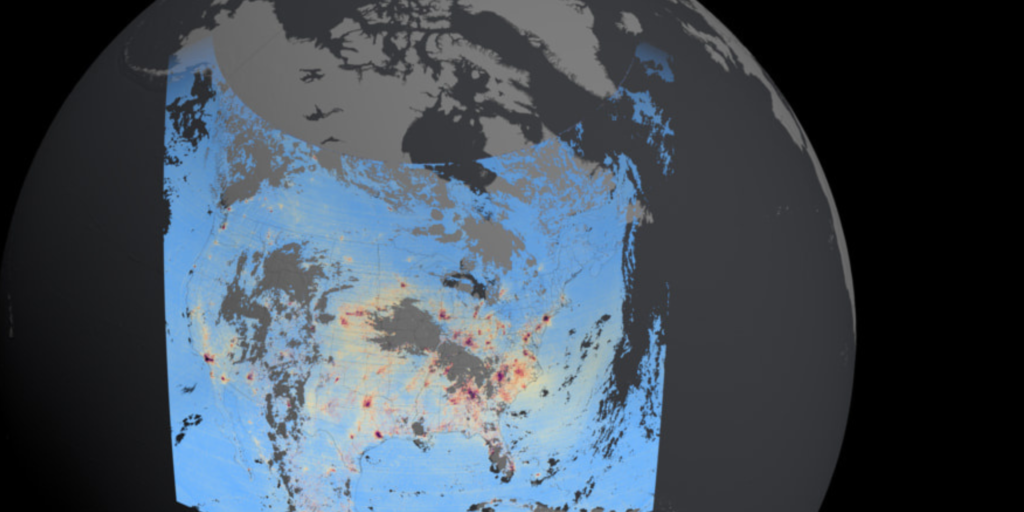NASA’s Pollution-Sniffing Satellite
Recall the refreshing, lung-tingling air following a summer thunderstorm? A large portion of that is due to NASA’s pollution-detecting superpower, TEMPO, which is orbiting Earth. TEMPO has been creating detailed maps of nitrogen dioxide (NO2) pollution across North America since its launch in August 2023. This has allowed us to gain previously unheard-of insights into the unseen enemy that clouds our skies.
Table of Contents
The catch, though, is that TEMPO’s mission was initially only supposed to last for 20 months, like all good things do. Thank goodness, NASA is not allowing its celebrity air quality investigator to retire early. We’re talking about years, not months, as they’re laying out the red carpet with a specialised “babying” operation to extract every last bit of data from TEMPO!

So, just how will NASA’s Pollution-Sniffing Satellite spoil this space sleuth?
close observation Consider it as a check-up with the stars. Engineers will be obsessive over every whimper and purr from TEMPO, scrutinising data like hawk-eyed physicians to spot any potential bugs or hiccups before they even get the chance to happen.
adjusting the knobs: Imagine a group of astronomical mechanics carefully modifying the pointing, data processing, and even onboard software of TEMPO. It’s similar to fine-tuning a beautifully made instrument to maintain a clear and loud sound of pure air.
Rationing resources: Every fuel drop and every memory byte matters. In order to make sure TEMPO’s mission is as successful as possible, NASA will be overseeing its resources like a frugal chef.
Why is it so important to prolong TEMPO’s life (NASA’s Pollution-Sniffing Satellite)?
- Data continuity is essential: Examining air pollution is akin to viewing a film in slow motion. To identify trends, assess the effectiveness of emission controls, and comprehend how pollution patterns evolve over time, we require long-term datasets. By completing gaps and providing additional footage, TEMPO’s extended mission will help us understand the importance of the fight for clean air.
- No satellite left behind: In its investigation of air quality, TEMPO is not working alone. It collaborates with other satellites, such as Sentinel-5P and Aura, each of which has advantages and disadvantages of its own. The additional years provided by TEMPO will guarantee smooth data coverage, filling in any gaps and providing us with a thorough understanding of the state of pollution.
- Creating a path for upcoming heroes: The accomplishments of TEMPO provide hope for the upcoming generation of air quality satellites.
In the future, even more potent pollution-tracking instruments will be built with the knowledge and skills obtained from prolonging its life.
TEMPO, with NASA’s tender care NASA’s Pollution-Sniffing Satellite, is destined to become the most revered air quality satellite, watching over our skies for many years to come. This is about securing clean air for future generations, not just completing a mission. Thus, let’s toast to TEMPO and the hardworking NASA team—of clean air, of course—for giving us yet another reason to be optimistic about a future Earth.


